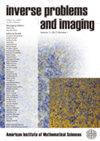Automatic extraction of cell nuclei using dilated convolutional network
IF 1.5
4区 数学
Q2 MATHEMATICS, APPLIED
引用次数: 0
Abstract
Pathological examination has been done manually by visual inspection of hematoxylin and eosin (H&E)-stained images. However, this process is labor intensive, prone to large variations, and lacking reproducibility in the diagnosis of a tumor. We aim to develop an automatic workflow to extract different cell nuclei found in cancerous tumors portrayed in digital renderings of the H&E-stained images. For a given image, we propose a semantic pixel-wise segmentation technique using dilated convolutions. The architecture of our dilated convolutional network (DCN) is based on SegNet, a deep convolutional encoder-decoder architecture. For the encoder, all the max pooling layers in the SegNet are removed and the convolutional layers are replaced by dilated convolution layers with increased dilation factors to preserve image resolution. For the decoder, all max unpooling layers are removed and the convolutional layers are replaced by dilated convolution layers with decreased dilation factors to remove gridding artifacts. We show that dilated convolutions are superior in extracting information from textured images. We test our DCN network on both synthetic data sets and a public available data set of H&E-stained images and achieve better results than the state of the art.基于扩张卷积网络的细胞核自动提取
病理检查已通过人工肉眼检查苏木精和伊红(H&E)染色图像。然而,这个过程是劳动密集型的,容易发生很大的变化,并且在肿瘤的诊断中缺乏可重复性。我们的目标是开发一种自动工作流程,以提取在h&e染色图像的数字渲染中发现的癌性肿瘤中的不同细胞核。对于给定的图像,我们提出了一种使用扩展卷积的语义像素分割技术。我们的扩展卷积网络(DCN)的架构是基于SegNet,一种深度卷积编码器-解码器架构。对于编码器,SegNet中所有的最大池化层都被移除,卷积层被增加了扩展因子的卷积层所取代,以保持图像分辨率。对于解码器,所有的最大解池层被移除,卷积层被膨胀系数降低的卷积层所取代,以去除网格伪影。我们证明了扩张卷积在从纹理图像中提取信息方面是优越的。我们在合成数据集和h&e染色图像的公共可用数据集上测试了我们的DCN网络,并取得了比目前更好的结果。
本文章由计算机程序翻译,如有差异,请以英文原文为准。
求助全文
约1分钟内获得全文
求助全文
来源期刊

Inverse Problems and Imaging
数学-物理:数学物理
CiteScore
2.50
自引率
0.00%
发文量
55
审稿时长
>12 weeks
期刊介绍:
Inverse Problems and Imaging publishes research articles of the highest quality that employ innovative mathematical and modeling techniques to study inverse and imaging problems arising in engineering and other sciences. Every published paper has a strong mathematical orientation employing methods from such areas as control theory, discrete mathematics, differential geometry, harmonic analysis, functional analysis, integral geometry, mathematical physics, numerical analysis, optimization, partial differential equations, and stochastic and statistical methods. The field of applications includes medical and other imaging, nondestructive testing, geophysical prospection and remote sensing as well as image analysis and image processing.
This journal is committed to recording important new results in its field and will maintain the highest standards of innovation and quality. To be published in this journal, a paper must be correct, novel, nontrivial and of interest to a substantial number of researchers and readers.
 求助内容:
求助内容: 应助结果提醒方式:
应助结果提醒方式:


